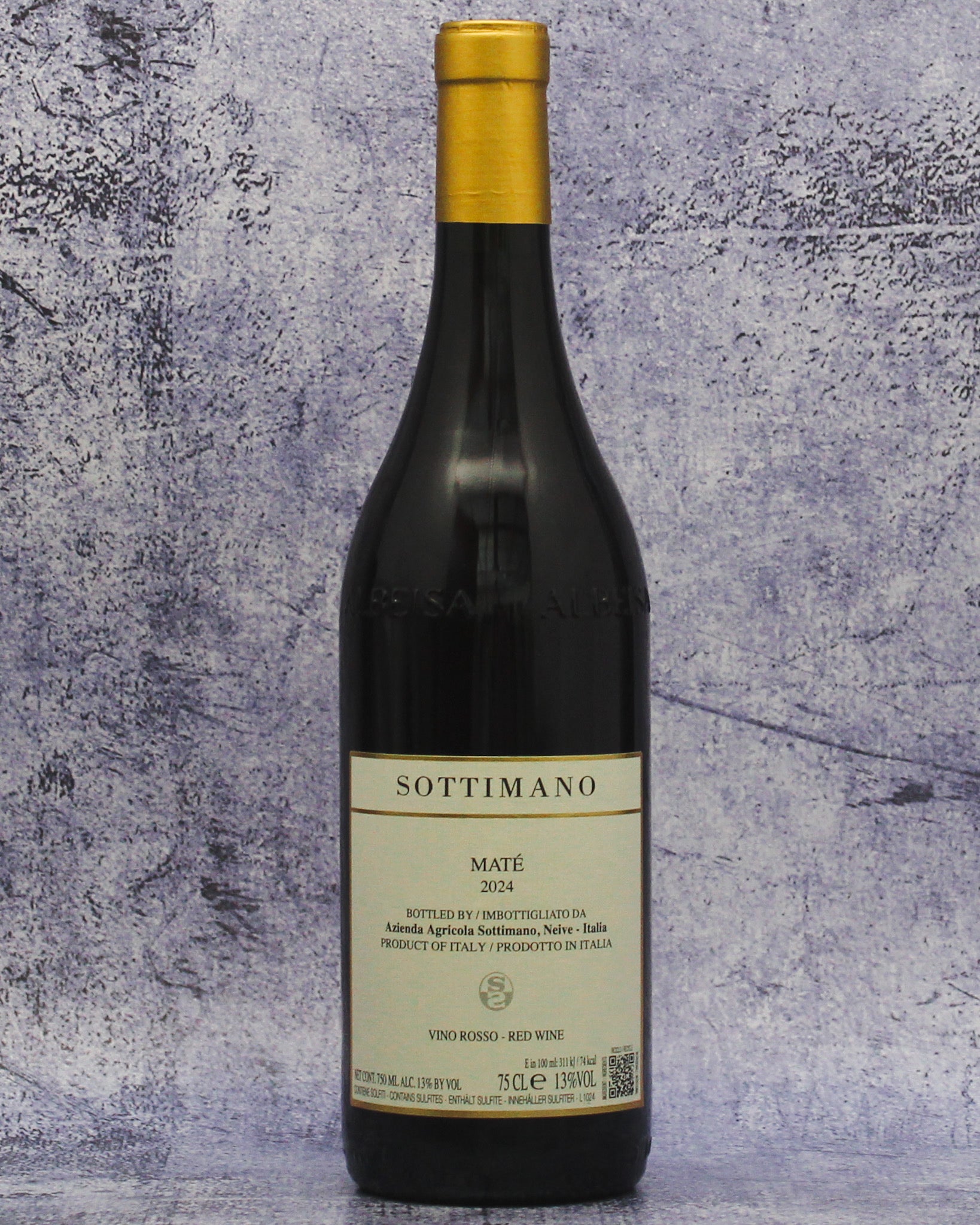From: Piedmont, Italy
Varietal: Brachetto
Taste: This review is for the previous vintage, but it is also applicable here and expands on the varietal.
91 POINTS, ROBERT PARKER’S WINE ADVOCATE
Made entirely with the Brachetto grape, the 2023 Maté is one of my favorite wines in the Sottimano portfolio. "Simpatico" is the best word to describe it. Brachetto has thick skins, low pH and low alcohol. It ferments for three weeks to reveal a fragrant bouquet with strawberry, spiced apple and blueberry. Like Freisa and Pelaverga, Brachetto is especially sensitive to disease and mildew pressure, and that explains why remaining acreage is small. Grignolino, Dolcetto and Barbera were traditionally the moneymakers of this region, especially in the 1970s. It's really nice to see an estate dedicate so much attention to this beautiful little grape. Andrea Sottimano works with whole berry fermentation, limited pump-overs and a few punch-downs because he does not want too much extraction. The purpose is to delicately break the cap. Production is 8,000 bottles.
Pairing: Pairings for dry Brachetto wines focus on savory elements and fresh flavors, such as light appetizers, goat cheese, picnic fare, charcuterie and cheese boards, flatbreads, salads, and cold cuts.
About. Many thanks to Skurnik Wines & Spirits for the following information. “I can’t say enough good things about the Sottimano family and the work they have done over the years to firmly establish themselves among Barbaresco’s top growers.” – Antonio Galloni
“From top to bottom, this is an impressive set of wines from Sottimano, a property that continues its rapid ascent into the top echelon of the region’s finest estates.” – Wine Advocate
Andrea Sottimano and his father Rino produce wines of outstanding quality from twenty lovingly cared for hectares in the Cottá, Currá, Fausoni, Pajoré and Basarin crus in the Neive and Treiso townships. Their Barbarescos are elegant, evocative, subtle and yet hearty – to taste these crus side-by-side is to reply with a resounding YES to skeptics of terroir that question whether differences of only 200 meters does matter!
Organic certified, the approach here is one of minimal intervention: indigenous yeasts, no fining or filtering. Natural cover crops (grass cover) are left in the rows between the vines and are mowed 2 or 3 times a year. In autumn the soil of every other row between the vines is tilled. Each of their five cru Barbarescos are given the same treatment to allow the uniqueness of each cru to express itself. Fermentation is done in oak vats, followed by 20-22 months in oak cask.

